One of the biggest decisions you have to take before flying off for vacation, backpacking trip or even a hiking trip, especially if it’s a long haul flight, is packing. What should you pack and what can you leave behind? How much should you pack? Should you pack all of your things in a backpack or a suitcase? These are some of the questions that you might already be grappling with or you should take into consideration.
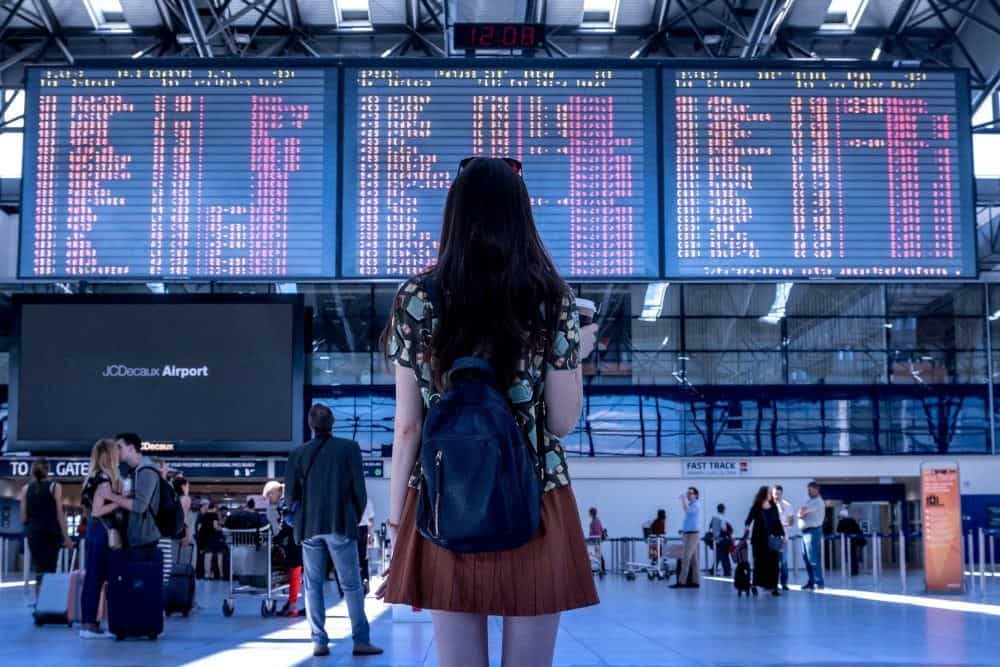
All seasoned travelers swear by backpacks as opposed to suitcases or even duffel bags. It’s a lot more convenient and safe. If you pack smartly, which we will get into in details shortly, your backpack can become carry-on luggage. It will be with you through the entire flight, which eliminates the possibility of the airlines misplacing or losing your bag. If you pack light, you will also be able to avoid the exorbitant extra luggage fees airlines are known to charge. Plus, you will be able to carry the backpack on your own and not require porters.
The key mantra of how to pack a backpack for air travel is pack light and utilize space smartly. Even though backpacks are convenient, you don’t want to be lugging an extremely heavy backpack during your trip. If you’re not used to carrying a heavy backpack, your shoulders and back muscles will be subjected to a lot of pressure and even result in an injury that completely spoils your trip. Even if you’re used to it, a heavy backpack will prevent you from fully experiencing and exploring the places you visit during the trip. How do you pack light and utilize space smartly?
To learn and master how to pack a backpack for air travel, you need to understand that planning is as important as the techniques and tricks used to pack. Planning can be divided into three distinct stages.
Table of Contents
Stage 1: Destination, Itinerary, and Airlines Dictate What You Pack
Your destination dictates what type of clothes, footwear, and other accessories you need for the trip. Your itinerary or the activities you have planned for the trip dictate any additional things you need to pack. So, if you’re headed to Scandinavia you will need jackets, sweatshirts, or warm footwear.Whereas, if you’re visiting Thailand, you can stick to shorts, t-shirts, and sandals.

We often make the mistake of packing too many clothes, mistakenly thinking that it’s better to carry a couple of extra pairs of jeans than to not have one if it’s required during the trip. When the truth is that you can easily wash and dry your clothes during the trip and use the same ones over a long period of time. Two pairs of jeans are ideal for almost all types of trips. You wear one and wash the other, which will dry overnight. The same goes for the t-shirt and button-down shirts.
The trick is to pick up clothes made of lightweight synthetic materials as opposed to cotton. Cotton clothing is difficult to clean and wrinkles easily, while synthetic materials can be washed over a sink and dry quick.
Just like clothing, your destination and itinerary determine the footwear you require for the trip. If you will be spending most of your time on beaches or visiting museums, you don’t need that pair of heavy hiking boots. A comfortable pair of sneakers and a sandal will do just fine. On the other hand, you don’t need to carry flip flops for a hiking trip.
Gadgets and entertainment items is another key element. Do you really need a laptop, tablet and a smartphone for the trip? Can you read books on your iPad instead of carrying multiple books and adding to the weight of the backpack? Will you really be using the heavy DSLR camera you plan to take with you or will you end up clicking most of the photos on your smartphone? You will have to take a tough decision. Gadgets and books significantly increase the weight of the backpack.
The airlines you’re traveling with also has an impact on what or rather how much you can pack. All airlines have their own set of restrictions regarding the maximum weight allowed to be carried into the flight and the weight of the check-in baggage. If your luggage exceeds these limits, you end up paying hefty fees for the excess weight.
So, find out what’s the weight limit for carry-on luggage with the airline. If you will be flying from one destination to the other during the trip, then find out the restrictions for those airlines as well. You should try your best to keep the weight of the backpack under this limit, but that doesn’t mean you leave behind any essential or necessary items to reduce the weight.
Stage 2: Lay It All Out
At this stage, you have a rough idea of what you want to pack for this trip. Before we can get down to how to pack a backpack for air travel, lay all of the things on your bed or on the floor. It helps if you have a checklist, either on a piece of paper or even as a note on your phone. Currently, everything that you have laid out on the floor is on that checklist.

Now arrange all of these things into piles. The first pile will be clothes, followed by footwear (including socks), essentials (which will include your travel documents and passport, sleeping bag, first aid kit, etc.), luxury (which will include extra gadgets, extra clothing items, toiletries, etc.) and others (which will include any other item(s) that initially laid out but couldn’t find a place for in any of the piles).
Stage 3: Be Ruthless
Now it’s time to channelize your inner Uma Thurman from Kill Bill and eliminate as much of the things in front of you as possible. Begin with the "others" pile and remove as many items as possible. Delete the items you have removed from the checklist as well. Go through the other piles as well.
There are some things that you can easily buy after you’ve reached your destination, such as toiletries. So, it doesn’t make sense to carry toothpaste or fat bottles of shampoo along with you. You can mix and match your clothes, instead of packing too many. By the end of this stage, you should have a final checklist of all the things you will be packing in the backpack.
Choosing a Backpack
The ideal backpack for air travel is a little different from what a good backpack for a backpacking trip would be. Firstly, you will have to take into consideration the size of the backpack. You can’t carry a huge backpack with you on the flight.
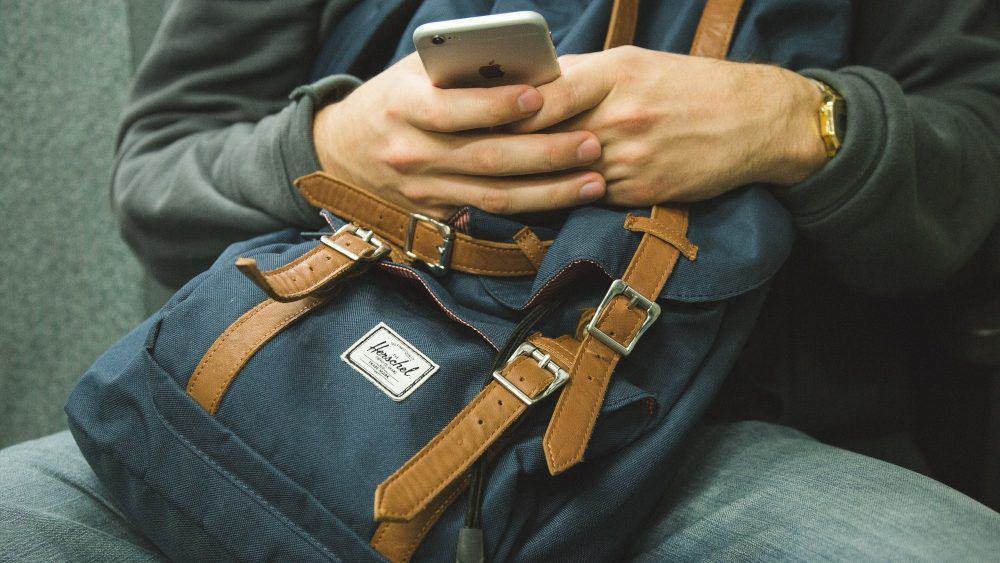
Obviously, that becomes redundant if you plan to check-in your backpack. If you’re checking in your backpack, then all of your essentials should be packed in a separate daypack, which will be your carry-on luggage. Also, avoid backpacks that have wheels stuck to the bottom and double up as trolleys. It makes the backpack unnecessarily heavy.
Outside the airport, you will be carrying the backpack on your shoulders and you don’t want to carry extra weight. Finally, pay particular attention to comfort and quality while selecting a backpack. Spend a few extra dollars if need be to buy a backpack with excellent shoulder straps and padded hip belt. It will be of immense help during the trip.
Backpack Packing Techniques
The method of packing your clothes and other gear in a suitcase or duffel can’t be used to pack things in a backpack, because the shape and dimensions of a suitcase and a backpack are completely different. You can use some of these techniques to efficiently pack all of your things in a carry-on backpack.
Roll Your Clothes
This is the most common technique for packing clothes in a backpack. It ensures that space inside the backpack is utilized efficiently and prevents wrinkling of clothes to a certain degree, which is a concern that stops many people from using a backpack over a suitcase or duffel bag.
T-shirts, tops, vests and other similar clothing items can be rolled using what is known as the army roll technique. You begin by folding a narrow strip at the bottom of the t-shirt inside out, followed by centering both sides of the t-shirt and folding it in half along the center.
Start rolling the t-shirt from the collar end, making sure that the roll is tightly wound. Use the strip folded inside out to secure the roll. This technique ensures that the rolled t-shirt doesn’t open up inside the backpack. It also enables you to stuff it into corners and gaps to efficiently use every inch of space in the backpack. In case of jeans, trousers, and shorts, fold them vertically in half and then roll them up compactly. To keep them secure you can use thick rubber bands.
If you’re off on a business trip or just want to carry formal shirts for the trip, you can’t roll them up. There’s a different technique for packing formal button-down shirts. More on that shortly.
Compression Bags and Dry Bags
As the name suggests, compression dry bags eliminate all excess air from within clothes and pack them tightly. These bags not only help you use the space more effectively, but you can also organize all of your clothes by packing them in different compression bags and then in the backpack.

Source: seatosummit.com
You won’t disrupt the entire order inside the backpack in an attempt to pull out a t-shirt. Instead, all the t-shirts will be in one compression bag, which you can easily fetch. It also makes the process of repacking during the trip much easier.
Efficient use of space is one of the keys to learning how to pack a backpack for air travel because you can’t carry a very big or heavy backpack on the flight. You should combine rolling your clothes and compression bags.
First, roll the clothes, then pack them in compression bags and then into the backpack. You should also keep a couple of spare compression dry bags with you to pack dirty, sweaty clothes or your wet towel. Dry bags are much better than carrying plastic bags.
You can get good quality compression dry and wet bags for under $20 each on online stores.
Packing Cubes and Folders
Packing cubes are more suitable for suitcases than backpacks, but if you can find packing cubes of the right size and shape, you can use them to organize your clothes in a backpack as well. Since there’s no compression involved in packing cubes, the primary utilization is organizing clothes and other things.
Packing folders are the ones that can help you pack formal button-down shirts, without completely spoiling them or wrinkling them. These folders come with a folding board. The shirt is laid out on it and folded in the correct way and locked in the folder. The folder can them be tucked in one of the sides of the backpack.
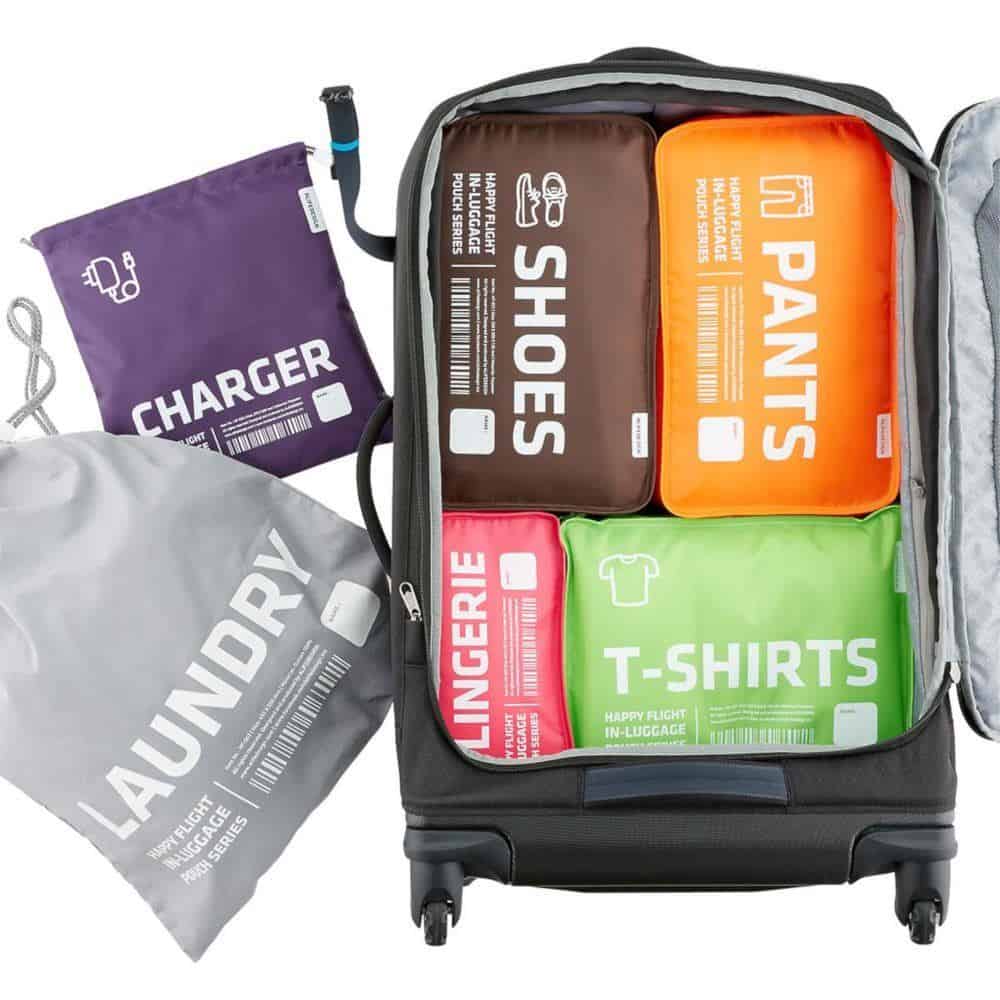
Source: containerstore.com
Order of Packing
You have rolled your clothes and packed them in compression bags or packing cubes. Now it’s time to pack them into the backpack. It’s important to understand that there’s a method involved in how to pack a backpack for air travel.
Lightweight and Non-Essentials Go First
Lightweight items such as your sleeping bag and things that you don’t need access to during the flight such as your extra pair of shoes or boots, go to the bottom of the backpack. This helps with the weight distribution through the backpack and also creates a stable base for the backpack. Your clothes, that are rolled up and packed in compression bags, are the next to go into the backpack.
It’s a lot easier and more convenient if the clothes are in compression bags because you can easily pull out a bag to take out an item of clothing and pack the compression bag back into the backpack, during the trip. If the clothes are rolled but not in compression bags, you will have to spend a lot more time repacking the backpack.
Gadgets Go in the Middle
It’s not just gadgets such as your laptop and camera, but any other particular heavy item that you’re carrying. These go in the middle part of the backpack. The base at the bottom provides a degree of protection to the gadgets, which can get damaged otherwise. Ideally, carry the gadgets in their respective sleeves or some other form on protective carry-pack to avoid scratches and dents. The gadgets will inevitably bump against each other inside the backpack and without a protective sleeve, there could be some wear and tear.
Things You Need during the Flight at the Top
Depending on how far you’re traveling, the number of stopovers in between and the length of the stopovers, you will be spending a number of hours cooped up in the airplane or lounging in airports. Hence, all of the things you might need during those long hours should be readily available to you at the top of the backpack.
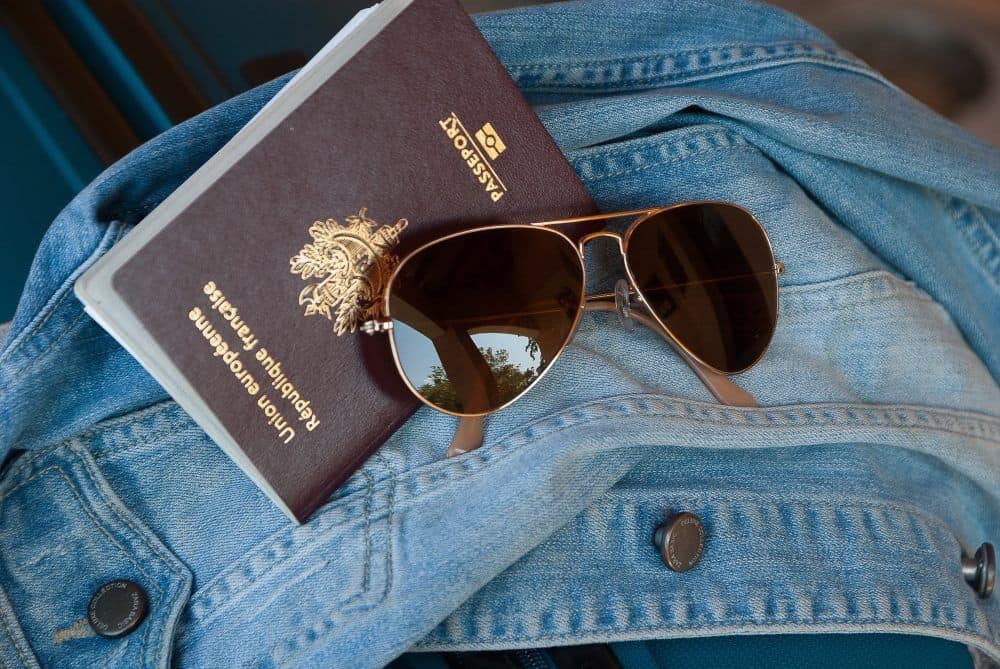
Conclusion
If you’re feeling a tinge of panic at this stage, know that it’s normal. It’s normal to worry about forgetting to pack something very important. That’s the reason you made a checklist. Go back to the checklist to calm yourself. By now you know all you need to know about packing a backpack. However, there are a few other things that need to be mentioned.
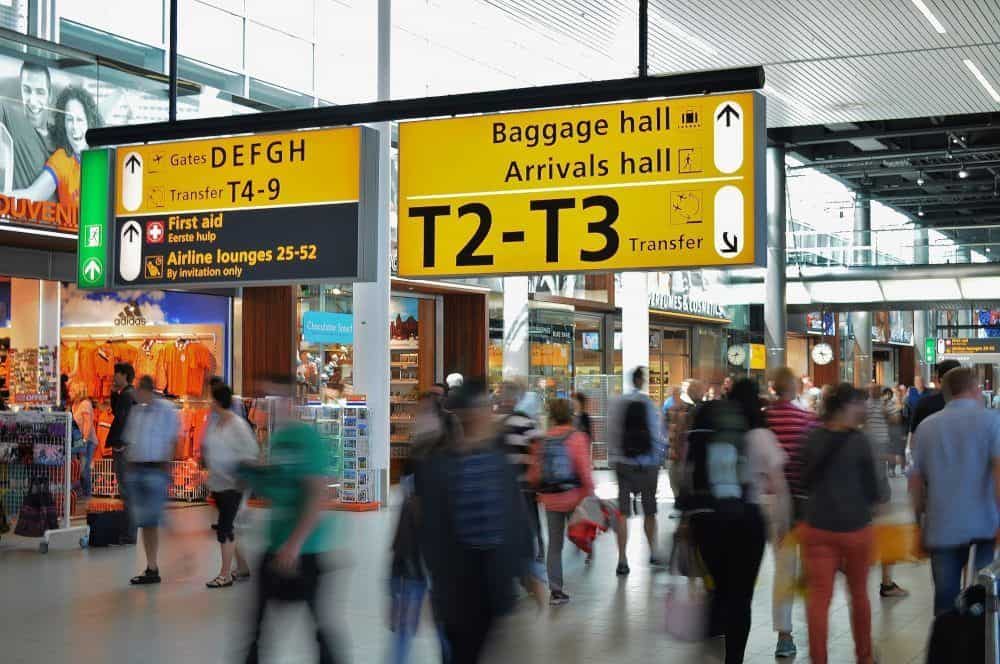
Firstly, wear your bulkiest clothes and footwear on the flight. This reduces the weight of the backpack. If the flight is particularly long and you are worried about feeling uncomfortable in these bulky clothes, remember that you have space at the top of the backpack for things you need on the flight. Pack a comfy sweatshirt or t-shirt that you can change into.
Secondly, you are allowed to carry one other smaller bag, on the flight. It needs to be small enough to fit in the space under your seat. You can carry the snacks in this bag instead of the carry-on backpack, along with your headphones and other paraphernalia. During the trip, this bag will be the one you carry instead of the bigger backpack.
Finally, always keep in mind that the real purpose of the trip is to explore and experience and new city or country. So, you should pack the backpack to give the best opportunity to enjoy yourself and not worry about a bulky backpack.
